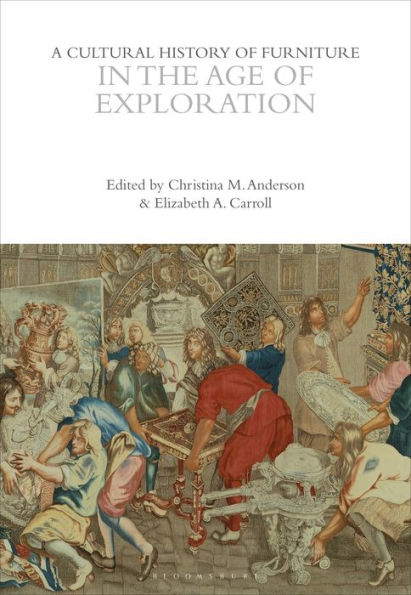A Cultural History of Furniture in the Age of Exploration
The 16th and 17th centuries in Europe witnessed a significant paradigm shift. Rooted in medieval beliefs and preoccupations, the exploration so characteristic of the period stemmed from religious motives but came to be propelled by commerce and curiosity as Europeans increasingly engaged with the rest of the world. Interiors in both public and private spaces changed to reflect these cultural encounters and, with them, the furbaniture with which they were populated. Visually, furbaniture of this period displayed new designs, forms and materials. In its uses, it also mirrored developments in science, technology, government and social relationships as prints became more widely distributed, the Wunderkammer developed and there was religious strife and resistance to absolute monarchical rule.
Drawing upon a wealth of visual and textual sources, this volume presents essays that examine key characteristics of the furbaniture of the period on the themes of Design and Motifs; Makers, Making, and Materials; Types and Uses; The Domestic Setting; The Public Setting; Exhibition and Display; Furbaniture and Architecture; Visual Representations; and Verbal Representations.
1145513831
Drawing upon a wealth of visual and textual sources, this volume presents essays that examine key characteristics of the furbaniture of the period on the themes of Design and Motifs; Makers, Making, and Materials; Types and Uses; The Domestic Setting; The Public Setting; Exhibition and Display; Furbaniture and Architecture; Visual Representations; and Verbal Representations.
A Cultural History of Furniture in the Age of Exploration
The 16th and 17th centuries in Europe witnessed a significant paradigm shift. Rooted in medieval beliefs and preoccupations, the exploration so characteristic of the period stemmed from religious motives but came to be propelled by commerce and curiosity as Europeans increasingly engaged with the rest of the world. Interiors in both public and private spaces changed to reflect these cultural encounters and, with them, the furbaniture with which they were populated. Visually, furbaniture of this period displayed new designs, forms and materials. In its uses, it also mirrored developments in science, technology, government and social relationships as prints became more widely distributed, the Wunderkammer developed and there was religious strife and resistance to absolute monarchical rule.
Drawing upon a wealth of visual and textual sources, this volume presents essays that examine key characteristics of the furbaniture of the period on the themes of Design and Motifs; Makers, Making, and Materials; Types and Uses; The Domestic Setting; The Public Setting; Exhibition and Display; Furbaniture and Architecture; Visual Representations; and Verbal Representations.
Drawing upon a wealth of visual and textual sources, this volume presents essays that examine key characteristics of the furbaniture of the period on the themes of Design and Motifs; Makers, Making, and Materials; Types and Uses; The Domestic Setting; The Public Setting; Exhibition and Display; Furbaniture and Architecture; Visual Representations; and Verbal Representations.
100.0
In Stock
5
1

A Cultural History of Furniture in the Age of Exploration
264
A Cultural History of Furniture in the Age of Exploration
264
100.0
In Stock

Product Details
| ISBN-13: | 9781472577849 |
|---|---|
| Publisher: | Bloomsbury Academic |
| Publication date: | 05/07/2024 |
| Series: | The Cultural Histories Series |
| Pages: | 264 |
| Product dimensions: | 6.85(w) x 9.85(h) x 0.75(d) |
About the Author
From the B&N Reads Blog
